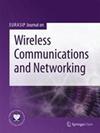利用联邦学习在跳频网络中利用信道访问优先级提高吞吐量
IF 1.9
4区 计算机科学
Q2 ENGINEERING, ELECTRICAL & ELECTRONIC
EURASIP Journal on Wireless Communications and Networking
Pub Date : 2023-10-05
DOI:10.1186/s13638-023-02313-9
引用次数: 0
摘要
跳频通信(FHC)中的节点利用伪随机分配的载波频率和时隙发送数据。因此,提供了高度的防窃听和抗干扰能力。当在一个环境中使用FHC时,共享时间和频率资源、避免冲突、区分业务都变得更加复杂。本文提出了一种基于分散无线网络的FHC协议。它是一种多访问控制机制,具有优先级和分布式。空通道的比例度量可以在前面的句子中找到。通过为各种业务分类分配不同的空信道阈值的预设比率,可以在信道访问中提供优先级。有部分碰撞的频率扩展段的帧也包括在内。为了对FHC的性能进行理论检验,从碰撞概率、传输概率和帧服务时间三个方面对分析模型进行了仿真。本次调查的目的是确定FHC的效果如何。详尽的模拟和理论研究结果证明了分析模型的正确性。云平台经常用于当今最尖端的机器学习技术的指导,例如深度神经网络。这样做是为了利用云的弹性扩展能力。为了满足这些应用的标准,联邦学习作为一种分布式机器学习解决方案被提出。这样做是为了满足这类应用程序的需求。在联邦学习(FL)中,即使每个使用系统的人都一起训练模型,也没有人与其他人分享他们的数据。每个用户用自己的数据训练一个本地模型,然后将更新后的模型与FL服务器通信,以便可以聚合数据并构建全局模型。这个过程确保每个用户的模型是唯一的。这一过程不断重复,直到形成一个全球模型。这种培训不仅减少了将数据传输到中央服务器所需的网络开销,而且还保护了用户的个人信息。在这项工作的框架内,我们研究了在分散网络的许多设备上使用FL学习技术的可行性。在集中式服务器上,我们通过比较其准确性和使用一系列不同参数值组合进行训练所需的时间来分析FL模型的性能。此外,可以使这些联邦模型的精度达到与中心模型的精度相当的水平。本文章由计算机程序翻译,如有差异,请以英文原文为准。

Enhancing throughput using channel access priorities in frequency hopping network using federated learning
Abstract The data are sent by the nodes taking part in frequency hopping communications (FHC) utilising carrier frequencies and time slots that are pseudo-randomly assigned. Because of this, a high degree of protection against eavesdropping and anti-interference capabilities is provided. When using FHC in an environment, sharing time and frequency resources, avoiding collisions, and differentiating services are all made more complex as a result of this. A protocol for FHC that is based on dispersed wireless networks is presented by the authors of this research. It is a mechanism for multiple access control, which is prioritised and distributed. The ratio of empty channels metric can be found in the previous sentence. It is possible to provide priority in channel access by assigning different preset ratios of empty channel thresholds to the various traffic classes. Frames from frequency spread segments that have a partial collision are included as well. An analytical model is simulated for the analysis in terms of collision probability, transmission probability, and frame service time in order to carry out a theoretical examination of the performance of FHC. The objective of this inquiry is to determine how well FHC works. The analytical model has been proven correct by the exhaustive simulations as well as the theoretical findings. Cloud platforms are often used in the instruction of the most cutting-edge machine learning techniques of today, such as deep neural networks. This is done in order to take advantage of the cloud's capacity to scale elastically. In order to satisfy the criteria of these sorts of applications, federated learning, has been proposed as a distributed machine learning solution. This is done in order to fulfil the requirements of these kinds of applications. In federated learning (FL), even though everyone who uses the system works together to train a model, nobody ever shares their data with anybody else. Each user trains a local model with their own data, and then communicates the updated models with a FL server so that the data can be aggregated and a global model can be constructed. This process ensures that each user's model is unique. This process is repeated until a global model has been developed. This kind of training not only reduces the amount of network overhead that is necessary to transfer data to a centralised server, but it also safeguards the personal information of the users. Within the framework of this work, we looked at the feasibility of using the FL technique of learning on the many devices that are part of the dispersed network. On a centralised server, we conduct an analysis of the performance of the FL model by comparing its accuracy and the amount of time it takes to train using a range of various parameter value combinations. Additionally, the accuracy of these federated models may be made to reach a level that is comparable to that of the accuracy of central models.
求助全文
通过发布文献求助,成功后即可免费获取论文全文。
去求助
来源期刊
CiteScore
7.70
自引率
3.80%
发文量
109
审稿时长
8.0 months
期刊介绍:
The overall aim of the EURASIP Journal on Wireless Communications and Networking (EURASIP JWCN) is to bring together science and applications of wireless communications and networking technologies with emphasis on signal processing techniques and tools. It is directed at both practicing engineers and academic researchers. EURASIP Journal on Wireless Communications and Networking will highlight the continued growth and new challenges in wireless technology, for both application development and basic research. Articles should emphasize original results relating to the theory and/or applications of wireless communications and networking. Review articles, especially those emphasizing multidisciplinary views of communications and networking, are also welcome. EURASIP Journal on Wireless Communications and Networking employs a paperless, electronic submission and evaluation system to promote a rapid turnaround in the peer-review process.
The journal is an Open Access journal since 2004.

 求助内容:
求助内容: 应助结果提醒方式:
应助结果提醒方式:


